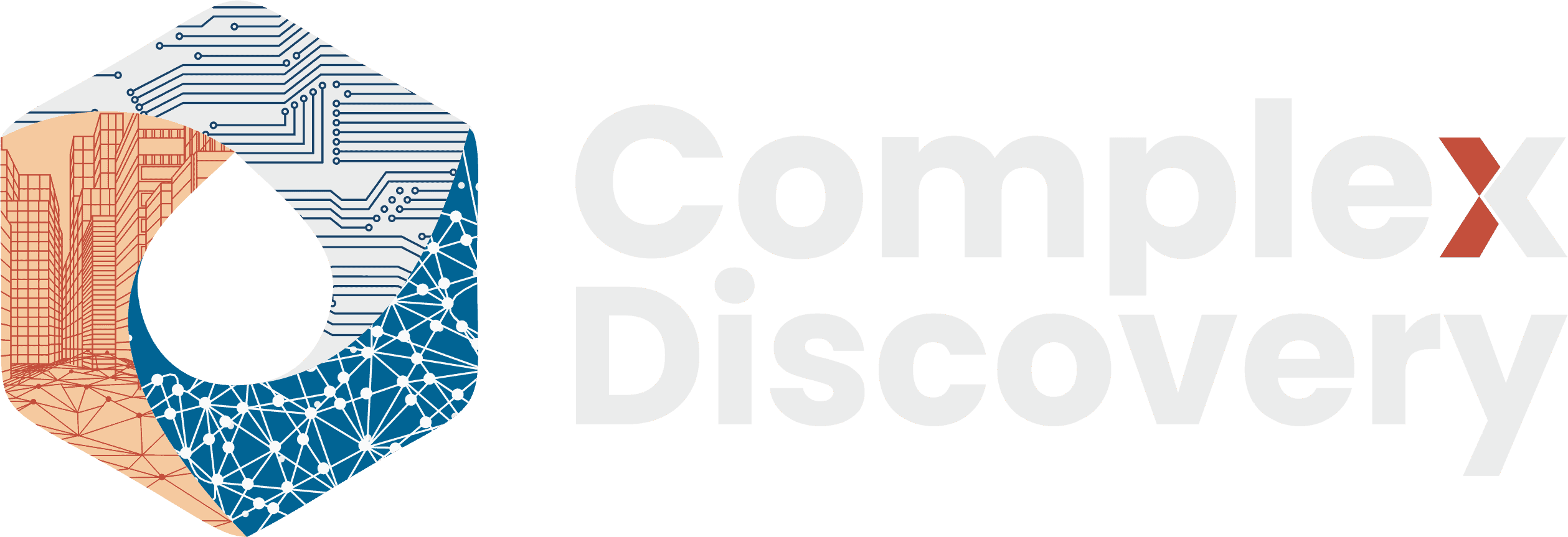Editor’s Note: AI isn’t just evolving—it’s embedding itself into the very infrastructure of enterprise, governance, and law. The 2025 AI Index Report, released by the Stanford Institute for Human-Centered Artificial Intelligence (HAI), arrives at a moment when artificial intelligence is no longer theoretical or optional. It’s real, operational, and consequential. With 233 AI-related incidents reported in 2024 alone, this year’s report reflects both the promise and the peril of accelerated AI deployment. For cybersecurity, information governance, and eDiscovery professionals, the report is a crucial barometer, highlighting the tension between adoption and oversight, speed and safety. As intelligent systems shape new capabilities, this report is a mirror revealing where trust must be earned and risk must be redefined.
Content Assessment: AI Index Report 2025: A Wake-Up Call for Cybersecurity and Legal Oversight
Information - 92%
Insight - 93%
Relevance - 93%
Objectivity - 94%
Authority - 95%
93%
Excellent
A short percentage-based assessment of the qualitative benefit expressed as a percentage of positive reception of the recent article from ComplexDiscovery OÜ titled, "AI Index Report 2025: A Wake-Up Call for Cybersecurity and Legal Oversight."
Industry News – Artificial Intelligence Beat
AI Index Report 2025: A Wake-Up Call for Cybersecurity and Legal Oversight
ComplexDiscovery Staff
It began with 233 incidents.
That’s how many AI-related incidents were formally reported in 2024—more than in any previous year and more complex in nature. These incidents weren’t confined to academic case studies or experimental labs. They were real and consequential, ranging from flawed content moderation systems and unsafe decision automation to the spread of AI-generated misinformation during national elections. Together, they reflected an accelerating pattern: AI systems are being deployed at scale before they’re reliably understood, governed, or trusted.
Released in April 2025, the AI Index Report—now in its eighth edition—offers one of the most comprehensive assessments of artificial intelligence’s progress and implications. Compiled by the Stanford Institute for Human-Centered Artificial Intelligence (HAI), the report documents global data across technical, economic, scientific, educational, and regulatory dimensions. Its goal is not to predict outcomes but to provide context, especially as AI systems become embedded in sectors that touch public trust, such as cybersecurity, law, and governance.
This year’s edition arrives at a time when AI is transitioning from disruptive technology to critical infrastructure. That shift comes with higher expectations—and higher stakes. While enterprise adoption of AI has grown rapidly, with nearly 80 percent of organizations reporting AI use in 2024, the pace of responsible governance has not kept up. The report highlights how many companies now acknowledge cybersecurity, privacy, and regulatory compliance as serious AI risks. However, when it comes to implementing mitigation strategies, those acknowledgments often fail to translate into meaningful action.
For cybersecurity leaders and compliance professionals, that gap between recognition and remediation is more than a liability—it’s an operational risk. As more enterprise systems integrate generative models and language-based tools, the attack surface grows. AI can unintentionally amplify vulnerabilities, from data poisoning to adversarial manipulation. These risks are no longer hypothetical. According to the Index, AI-related incidents involving cybersecurity failures rose sharply in 2024, underscoring the urgent need for models that are not only performant but also resilient and auditable.
In legal and information governance domains, the findings are equally instructive. Many organizations are now using AI to manage records, classify sensitive data, or conduct early-stage document review. Yet, according to the report, few have fully evaluated the fairness, factuality, or provenance of these systems. That matters because the legal defensibility of AI-assisted processes depends not only on what a model does but on how it was trained, what data it used, and how its outputs can be verified. The report makes clear that while the capabilities of AI have advanced rapidly, the surrounding controls—model documentation, bias testing, interpretability protocols—are developing far more slowly.
Transparency, or the lack of it, emerges as one of the core challenges in the current AI landscape. While some developers of foundation models have begun releasing safety evaluations and training documentation, many still offer minimal disclosures. The AI Index notes that transparency scores among major model developers have improved, rising from 37 percent in 2023 to 58 percent in 2024. However, even with that progress, more than 40 percent of foundational model releases still provide little information about their data sources or safety practices. For legal discovery teams or regulators, this opacity creates friction in auditability and risk modeling.
Data provenance is becoming especially fraught. The 2025 report details how AI’s reliance on open web content is being challenged by a wave of access restrictions and copyright assertions. Between 2023 and 2024, the percentage of restricted content in one of the most widely used training datasets ballooned from under 10 percent to more than 30 percent. As more websites introduce blocks on data scraping and as jurisdictions tighten data licensing standards, the models built on ambiguous or unlicensed content face escalating scrutiny. In practical terms, this complicates due diligence, procurement, and compliance efforts, especially when AI is used in regulated workflows.
Bias, a long-known issue in machine learning, remains unresolved. Despite increased awareness and institutional efforts to address discriminatory outcomes, the report highlights that major models—including those designed for safety and fairness—continue to display implicit racial and gender biases. These are not surface-level flaws; they are systemic tendencies, such as associating certain identities with negative traits or skewing leadership descriptors along gender lines. In high-risk domains—law, hiring, healthcare—such patterns can have legal and ethical implications. For organizations using AI in decision-making processes, bias isn’t just a reputational issue; it’s a legal exposure.
Nowhere is this risk more visible than in the realm of misinformation. The 2025 report documents the use of AI-generated content in over a dozen national elections, including through manipulated videos and synthetic social media campaigns. While the actual impact of these tactics remains difficult to measure, the existence of high-fidelity deepfakes already complicates digital evidence chains. Forensic analysts, legal teams, and investigative professionals must now account for the possibility that evidence has not only been edited but also synthetically generated, without any human origin. This introduces a new class of challenges in authentication, custody, and courtroom admissibility.
Even as the risks grow, the barriers to deploying powerful AI models are falling. Inference costs—the price of querying large models—have dropped by hundreds of times in the past two years. Smaller, more efficient models now rival the performance of earlier generation giants, and open-weight alternatives are closing the gap with proprietary offerings. This makes AI more accessible, which accelerates adoption. However, it also means that sophisticated AI tools are now being used by organizations that may not have the governance infrastructure to manage them responsibly. This democratization without guardrails further elevates the importance of transparency, standards, and independent evaluation.
The report does identify areas of movement. New benchmarks have emerged to evaluate AI systems for factual accuracy and safety. Government investment in AI infrastructure has surged. And the research community is increasingly engaging with responsible AI themes, as evidenced by a nearly 30 percent rise in relevant academic publications. Still, these efforts remain fragmented, and most remain voluntary. Until formal standards are adopted and enforced—by regulators, industries, or courts—the uneven state of AI governance will persist.
The AI Index Report 2025 is not a response to the AI incidents of the past year. It is a reflection of them. It captures a system in transition: one where AI is moving faster than oversight and where every new capability introduces a corresponding responsibility. For professionals charged with managing security, compliance, or legal accountability, this report offers not just metrics but a mirror. It shows where attention is being paid, where diligence is being neglected, and where leadership is urgently needed.
In a year that saw 233 reported incidents—each one a signal of friction between power and control—the question isn’t whether AI is reshaping our systems. It’s whether we are reshaping our responsibilities to keep up. The incidents of 2024 were not outliers. They were indicators. And unless that pattern is met with clarity, coordination, and credible governance, the next set of incidents may not just test our trust—they may redefine it.
News Sources
- The 2025 AI Index Report (Stanford HAI)
- AI Index 2025: State of AI in 10 Charts (Stanford HAI)
- Navigating the Future: Key Enterprise Insights from the 2025 AI Index (Open Policy)
- Five AI policy takeaways from the new Stanford HAI Index Report (Transparency Coalition)
Assisted by GAI and LLM Technologies
Additional Reading
- Licensing Over Litigation? U.S. Copyright Office Offers a New Path Through AI’s Legal Labyrinth
- Zero-Person Startups: How Agentic AI is Shaping a New Business Frontier
- AI FOMO Drives Venture Capital Surge: Implications for Cybersecurity, eDiscovery, and Legal Technology
- Global Startups Gain Cross-Border Backing from Baltic Angels at Latitude59 2025
Source: ComplexDiscovery OÜ









































